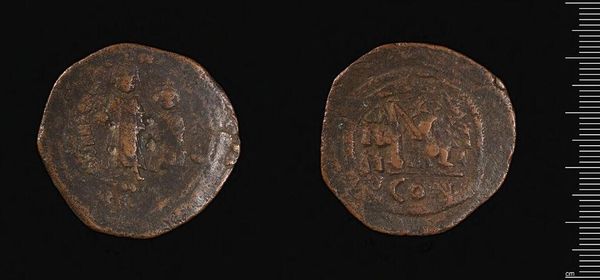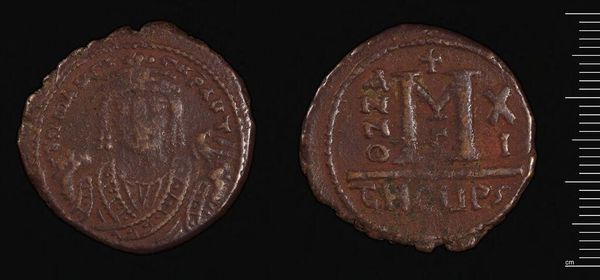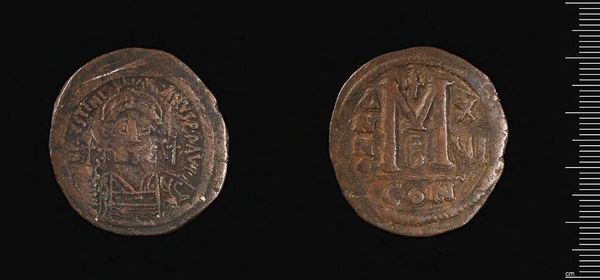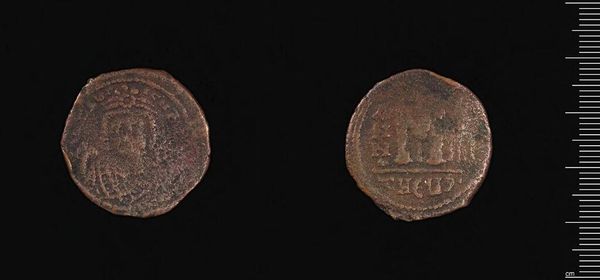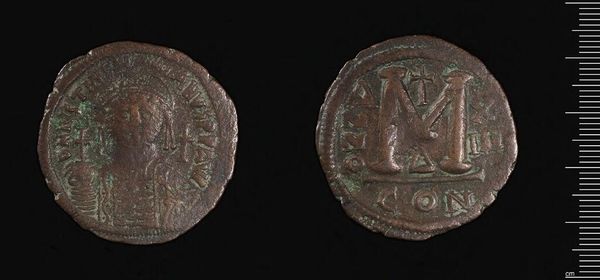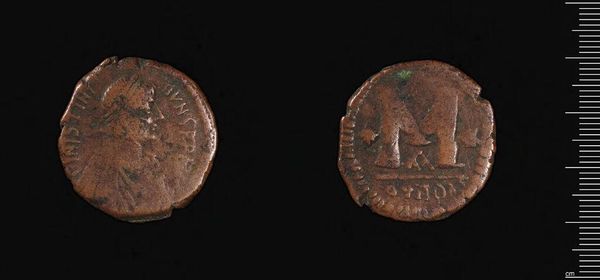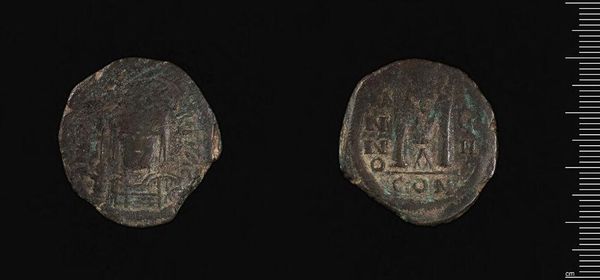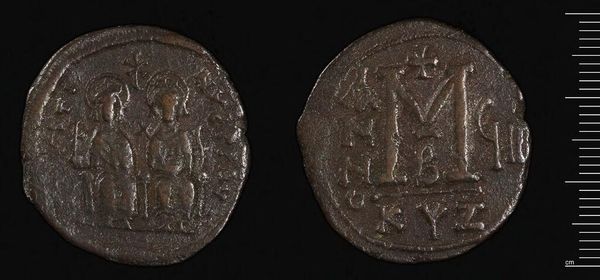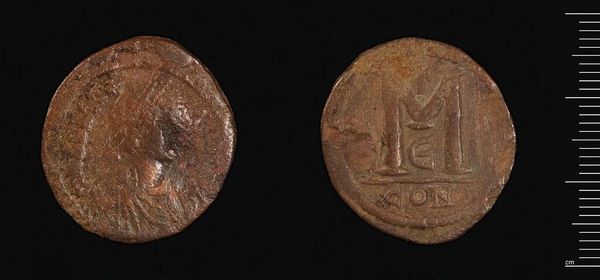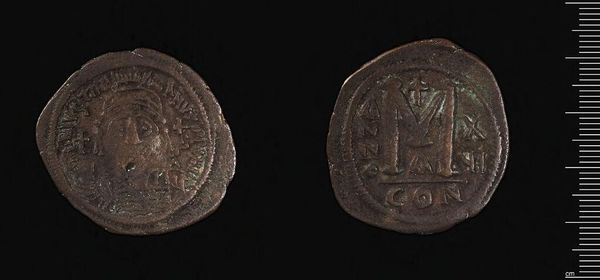
Dimensions: 9.20 g
Copyright: CC0 1.0
Editor: Here we have a coin attributed to Abd-al-Malik of the Umayyad dynasty. It is currently held at the Harvard Art Museums and weighs 9.20 grams. It seems to be a copy of a coin of Herakleios, of the Byzantine Empire. What can you tell us about the cultural significance of this piece? Curator: This coin exemplifies the visual and political strategies of the early Islamic caliphate. Abd-al-Malik initially adopted Byzantine coin designs to maintain economic stability. He appropriated imagery of power, and then incrementally Islamicized the coinage, removing Christian symbols and replacing them with Arabic script. The coin reveals the evolving identity of the Umayyad dynasty. Editor: So, it's a statement about power and authority through appropriation and adaptation? Curator: Precisely. Consider how the Umayyads leveraged existing visual languages to legitimize their rule and gradually introduced new forms of representation. Editor: That’s fascinating. I had no idea a simple coin could reveal so much about political maneuvering and cultural identity.
Comments
No comments
Be the first to comment and join the conversation on the ultimate creative platform.
